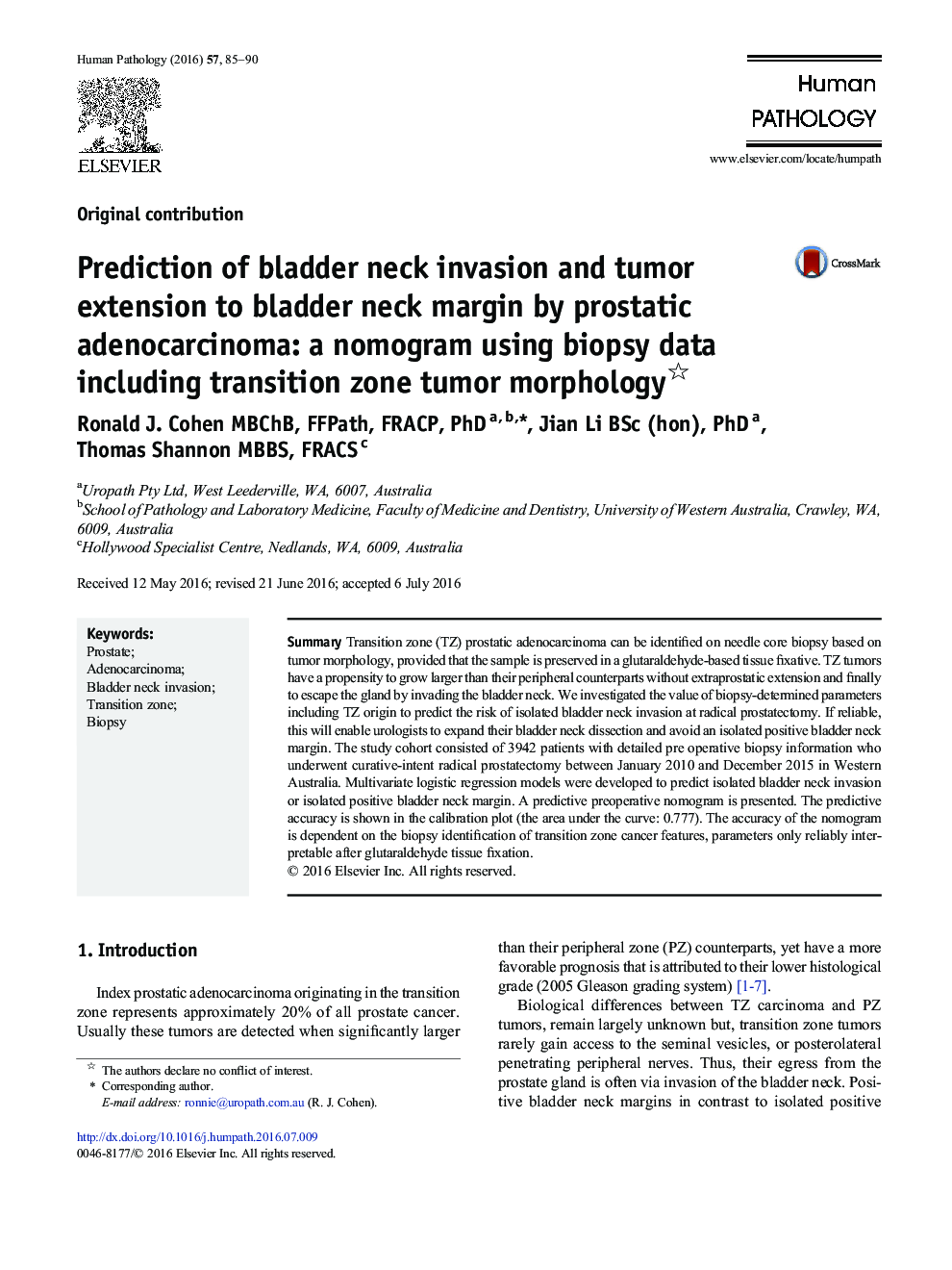| Article ID | Journal | Published Year | Pages | File Type |
|---|---|---|---|---|
| 6215349 | Human Pathology | 2016 | 6 Pages |
SummaryTransition zone (TZ) prostatic adenocarcinoma can be identified on needle core biopsy based on tumor morphology, provided that the sample is preserved in a glutaraldehyde-based tissue fixative. TZ tumors have a propensity to grow larger than their peripheral counterparts without extraprostatic extension and finally to escape the gland by invading the bladder neck. We investigated the value of biopsy-determined parameters including TZ origin to predict the risk of isolated bladder neck invasion at radical prostatectomy. If reliable, this will enable urologists to expand their bladder neck dissection and avoid an isolated positive bladder neck margin. The study cohort consisted of 3942 patients with detailed pre operative biopsy information who underwent curative-intent radical prostatectomy between January 2010 and December 2015 in Western Australia. Multivariate logistic regression models were developed to predict isolated bladder neck invasion or isolated positive bladder neck margin. A predictive preoperative nomogram is presented. The predictive accuracy is shown in the calibration plot (the area under the curve: 0.777). The accuracy of the nomogram is dependent on the biopsy identification of transition zone cancer features, parameters only reliably interpretable after glutaraldehyde tissue fixation.
